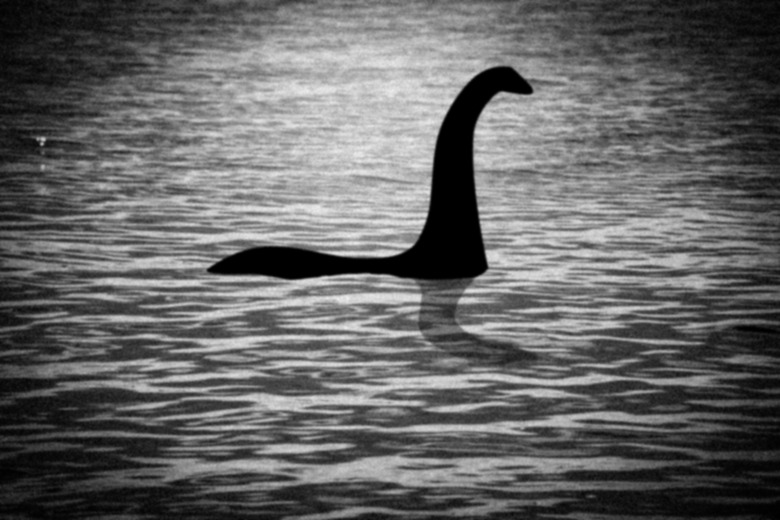Cryptozoology: The Pseudo-Science Of Mythical Creatures
Like the fictional archaeologist Dr. Daniel Jackson in the "Stargate SG-1" television series and movies, who was regularly mocked by his peers for his UFO-related beliefs about the pyramids of Egypt, cryptozoologists face similar scorn today for their ideas and research on hidden or mythological creatures.
Defined by the academic community as a pseudoscience, cryptozoology's main purpose is to find and prove the existence of animals talked about in legends, folklore and mythology like Bigfoot, chupacabras, the Loch Ness monster, ancient sea monsters and animals thought to be extinct and ignored by most biologists and zoologists. Serious cryptozoologists, generally self-financed or funded by private donations, aim to prove these hidden animals exist by collecting and studying evidence from locations of reported sightings.
The Pseudoscience of Cryptozoology
The Pseudoscience of Cryptozoology
Most academics look down on the study of mythical or hidden creatures, implying that it is not a true science. Zoology for example, involves the study of animal behavior, their physical bodies, their habitats, their distribution and their taxonomy. However, the idea behind cryptozoology is the same, except it involves looking for animals long hidden from the modern world.
Even so, it is not a field of study recognized at a collegiate level, even though beasts long thought to be extinct have turned up alive and well and flourishing on Earth. For example, the Chacoan Peccary, a boar-type animal, thought to be extinct from the discovery of Ice-Age bones, is alive and well and thriving in South America. Then there's the Bermuda Petrel, a nocturnal bird with ground nests near the sea, avowed extinct at least twice but that still lives.
Many cryptozoologists posit that the Loch Ness monster – Nessie – is not a mythological beast at all, but is a survivor from the time of dinosaurs. Many cryptozoologists suggest Nessie is an ancient plesiosaurus. Sightings of Nessie seem to back this idea, as the plesiosaurus shares features in common with the Loch Ness monster: a long, tubular neck, a bullet- or torpedo-shaped body, four paddle-like fins and a short tail. These researchers suggest that Nessie survived the dinosaur extinction because she lived deep under water, and that she may have gained access to the Loch through underwater caves that at one time, gave access to the sea.
Famous Cryptozoologists
Famous
Cryptozoologists
A French researcher, Dr. Bernard Heuvelmans, is recognized as coining the term cryptozoology in his 1955 book on the subject, "On the Track of Unknown Animals." He later credited the term to a student he knew, Ivan Sanderson, who used the word in two articles he wrote in 1947 and 1948. As a trained zoologist with a Ph.D. in the field, Dr. Heuvelmans devoted his professional career to cryptozoology.
Another modern cryptozoologist, American Loren Coleman, has written at least 40 books on the subject and runs a museum about these animals in Portland, Maine. He also lectures at various colleges and symposiums.
Hunting Cryptids
Hunting Cryptids
The name for this wildlife, cryptids, was first invented in the 1983 newsletter for The International Society of Cryptozoology in a letter to the editor written by Canadian John E. Wall. The term now holds a place in modern dictionaries. The definition of cryptids falls into seven categories:
1. Recognized living and extant species not known for living in specific regions. 2. Known living species with extraordinary-for-their-species colors, sizes and forms, like giant anacondas. 3. Species identified when previously thought to be extinct. 4. Likely extinct species not found as fossils, but known from limited proof such as skin, feathers and bones, without a complete sample. 5. Totally new species only known by subjective or anecdotal evidence without physical proof. 6. Animals presumed extinct because of known fossils, which live now or lived in the recent past. 7. New types of animals known only by aboriginal or indigenous tribes or uncovered accidentally.
Amateur and professional cryptid hunters all look for evidence that these mythological animals exist. For example, many castings of Bigfoot tracks exist, along with data that falls under the fourth definition: fur, scat, constructed habitats, videos and photos. Bigfoot researchers, have their own website – The Bigfoot Field Researchers Organization – that includes an online sightings database by geographic region, a list of meeting locations and Bigfoot expeditions open to members and non-members alike.
Researchers with BFRO claim that evidence comes in every month. Such evidence includes tracks like footprint castings with no match to living animals, or hairs not associated with living mammals and scatological evidence not related to living wildlife. Cryptozoologist Coleman started The International Cryptozoological Museum in Portland, Maine, and in early 2018 unveiled a new exhibit: Cryptoscatology, which includes actual samples of animal dung from a variety of creatures including Bigfoot.
Studying Cryptozoology
Studying
Cryptozoology
Some cryptozoologists got their start in traditional academic pursuits such as biology or zoology, as most colleges don't offer coursework on the topic. Some colleges do offer, from time to time, semester classes or host lecturers like Coleman, but other than that, you can't really pursue cryptozoology as a vocation. Those who do pursue it usually do so as an avocation and are either self-funded or receive funding from private donations. Others make their money by selling bling: video documentaries, t-shirts, coffee mugs, posters and the like.
You can join any one of the numerous organizations to stay abreast of current studies in the field, which often host annual conferences for members and non-members alike. Some of these organizations include the ones previously mentioned as well as The British Columbia Scientific Cryptozoological Club, the Bigfoot International Society, the Michigan Bigfoot and the North American Wood Ape Conservancy, to name a few.
Cite This Article
MLA
Brenner, Laurie. "Cryptozoology: The Pseudo-Science Of Mythical Creatures" sciencing.com, https://www.sciencing.com/cryptozoology-the-pseudo-science-of-mythical-creatures-13711529/. 18 May 2018.
APA
Brenner, Laurie. (2018, May 18). Cryptozoology: The Pseudo-Science Of Mythical Creatures. sciencing.com. Retrieved from https://www.sciencing.com/cryptozoology-the-pseudo-science-of-mythical-creatures-13711529/
Chicago
Brenner, Laurie. Cryptozoology: The Pseudo-Science Of Mythical Creatures last modified March 24, 2022. https://www.sciencing.com/cryptozoology-the-pseudo-science-of-mythical-creatures-13711529/
